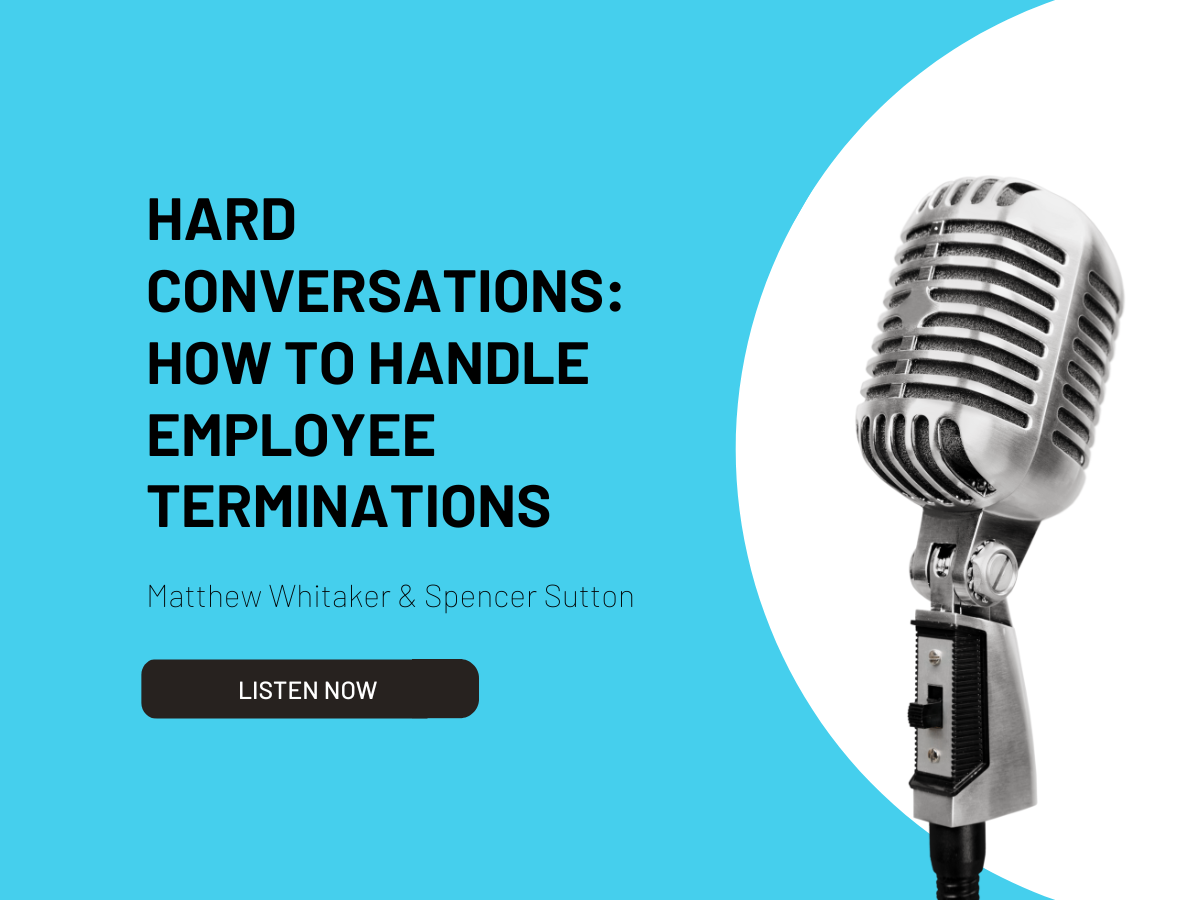In the latest episode of The Evernest Property Management Show, hosts Spencer and Matthew tackle one of the most challenging aspects of leadership: employee termination.
This discussion was chock full of insights and actionable advice for leaders grappling with the difficult decision of letting an employee go. Think: personal anecdotes, expert advice, and a deep dive into the importance of core values, self-awareness, and empathy in the hiring and firing process.
You can listen into the episode here or simply read on for top takeaways. Let’s dive in!
How to Handle Employee Terminations
Recognizing When It's Time to Let Go
Right off the bat, Spencer and Matthew make a point to acknowledge the emotional weight of terminating employees, especially those who have been loyal and dedicated to the organization. Remember that, while it is never easy, sometimes organizations outgrow certain roles, which means tough decisions must be made for the greater good of the team and the company.
Key Takeaways:
Assess Organizational Needs: Regularly evaluate whether the current team structure aligns with the evolving needs of the organization.
Objective Evaluation: Use performance metrics and core values as a framework for making objective decisions.
The Role of Self-Awareness in Leadership
Both hosts then stress the importance of self-awareness among leaders and employees.
Here, Matthew reflects on his own journey, expressing hope that he would recognize if the organization needed something he could no longer provide. “Sometimes these organizations just grow so fast that they outgrow people, and the demands become new demands,” he said. “Frankly, that may happen to me in this organization. I hope it does because that means the organization is thriving.”
This self-awareness is crucial for leaders to ensure they are not holding back the growth of the organization or the individuals within it.
Actionable Advice:
Regular Self-Assessment: Leaders should periodically assess their own performance and alignment with organizational goals.
Encourage Feedback: Foster a culture where employees feel comfortable providing feedback to leadership.
Aligning Actions with Core Values
Next, Matthew and Spencer cover the significance of core values in the hiring and firing process. Matthew explains that, when evaluating whether to retain an employee, leaders must consider if the individual aligns with the organization's core values. If a leader would not rehire the person if given the chance, it may be time to reconsider their position within the company.
Steps to Implement:
Define Core Values: Clearly articulate the core values of the organization and ensure they are integrated into all HR processes.
Regular Reviews: Conduct regular reviews to ensure employees' actions align with these core values (Evernest discusses whether each employee is meeting our Core Values on a monthly basis).
Treating Employees with Respect

A recurring theme in this conversation is the need for empathy when dealing with terminations.
As Matthew says, “'People always say, "Well, it's not personal." It is deeply personal, and you've got to understand that.”
That’s why it’s so critical to treat employees with dignity during the process.
Best Practices:
Confidentiality: Ensure termination discussions are private and handled with discretion.
Respect the Legacy: Acknowledge the contributions of the departing employee to maintain morale among remaining team members.
The Importance of Timing
Timing of termination conversations is critical. Matthew and Spencer are both in agreement that it’s often better to address these issues earlier in the week rather than waiting until Friday. This allows the individual to process the news and begin their job search without the added anxiety of a long weekend.
Communication Tips:
Approach Early: Schedule termination discussions earlier in the week (and/or early in the day) to give the employee time to process and plan.
Communicate Well: Be clear and certain during the conversation to avoid ambiguity.
Helping Employees Transition
Spencer and Matthew also agree on the importance of offering support to employees during their transition out of the organization. The degree to which this is possible will depend on the employee, the reasoning behind the termination, and their feelings about the transition, but it’s a great show of integrity whenever possible.
Support Strategies:
Job Search Resources: Provide departing employees with resources, like letters of rec or contacts, to aid in their job search.
Open Door Policy: Maintain an open door for future conversations and support.
Learning from Experience
Throughout the episode, both hosts share personal stories that illustrate their points.
Spencer recounts a time when he had to let someone go who had played a significant role in the organization’s success. He reflects on how that individual ultimately thrived in a new position that was better suited to their skills. Matthew shares his own experiences, emphasizing the importance of recognizing when a role is no longer a fit and supporting individuals in finding their next steps.
Lessons Learned:
Trust Your Gut: If you have a gut feeling that an employee is not a good fit, it’s important to act on it.
Support Growth: Help employees find roles that better align with their strengths, even if it means they leave the organization.
Final Thoughts: How to Handle Employee Terminations
If you’re a PMC owner, you’ll need to get comfortable with the difficult but necessary process of employee termination. Our belief is that it all comes down to empathy, self-awareness, and core values in making these tough decisions. Leaders should also approach terminations with dignity and respect, ensuring that both the organization and the departing employee can move forward positively.
Remember that, while these discussions are challenging, they are an essential part of effective leadership and organizational growth.
Ready for More?
We know what it’s like to grow a property management business from 30 doors to more than 16,000. The journey was anything but easy, and we learned tons of lessons along the way. Our desire to share that knowledge with you motivated us to start the Evernest Property Management Show podcast, a weekly newsletter, and our monthly webinar series for property managers.
Join Over 4,000 property management company owners who are reading the Evernest newsletter for all the latest podcast episodes, educational articles, webinar announcements, and recaps. We promise not to spam your inbox and only to deliver the highest quality, educational content to help you grow your property management business.
Sign up here today.


